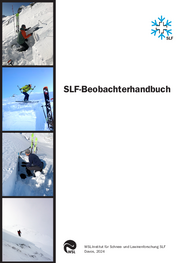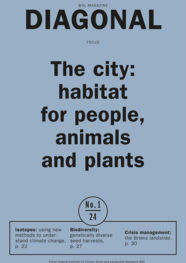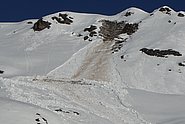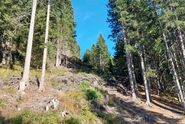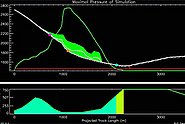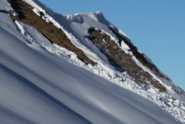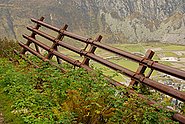
Avalanche formation ¶
In snow-covered mountains, avalanches are a significant natural hazard. They endanger settlements, roads and people who live and recreate in the mountains in winter. We investigate the snow properties and processes at work in the formation of an avalanche and so help to improve avalanche forecasting.
Content ¶
Whether and how avalanches occur depends largely on the structure of the snowpack. Does it consist of many different layers? Are they thick or rather thin? Continuous or patchy? Strong or weak? There are many influencing factors, and some are difficult to measure. To improve avalanche forecasting and to help snow sports enthusiasts better assess the avalanche danger themselves, we investigate how exactly different types of avalanches occur.
Experiments and models ¶
The aim of our research is to better understand the processes that take place before, during and after avalanche release. We use field measurements, laboratory experiments and computer models.
In field experiments we measure properties of the natural snow cover and soil, e.g.:
- filming a fracture as it propagates inside a weak layer using high-speed cameras
- we measure the stratification and the variability of individual snowpack layers with the SnowMicroPen, a high-resolution snow probe
- we measure soil and snow moisture to better understand the formation of glide-snow avalanches.
The cold lab allows us to conduct experiments under controlled conditions. Here we have the possibility to:
- produce nature-identical snow and grow weak layers ourselves, so that we always work with the same starting material.
- Carry out load tests that provide information about the mechanical properties of snow.
- use computer tomography to investigate the microstructure of weak layers and derive findings for avalanche forecasting.
- study the absorption of water from the soil under controlled conditions.
The results of measurements and experiments are used, among other things, as input for numerical simulations that help us to better understand physical processes, or to optimise the SNOWPACK model used by warning services in a number of countries as a tool for assessing avalanche danger.
Related topics ¶
Contact ¶
Publications WSL ¶
Scientific publications ¶
Bergfeld B., Van Herwijnen A., Bobillier G., Rosendahl P.L., Weißgraeber P., Adam V., … Schweizer J. (2023) Temporal evolution of crack propagation characteristics in a weak snowpack layer: conditions of crack arrest and sustained propagation. Nat. Hazards Earth Syst. Sci. 23(1), 293-315. https://doi.org/10.5194/nhess-23-293-2023 Institutional Repository DORA
Mayer S., van Herwijnen A., Techel F., Schweizer J. (2022) A random forest model to assess snow instability from simulated snow stratigraphy. Cryosphere. 16(11), 4593-4615. https://doi.org/10.5194/tc-16-4593-2022 Institutional Repository DORA









